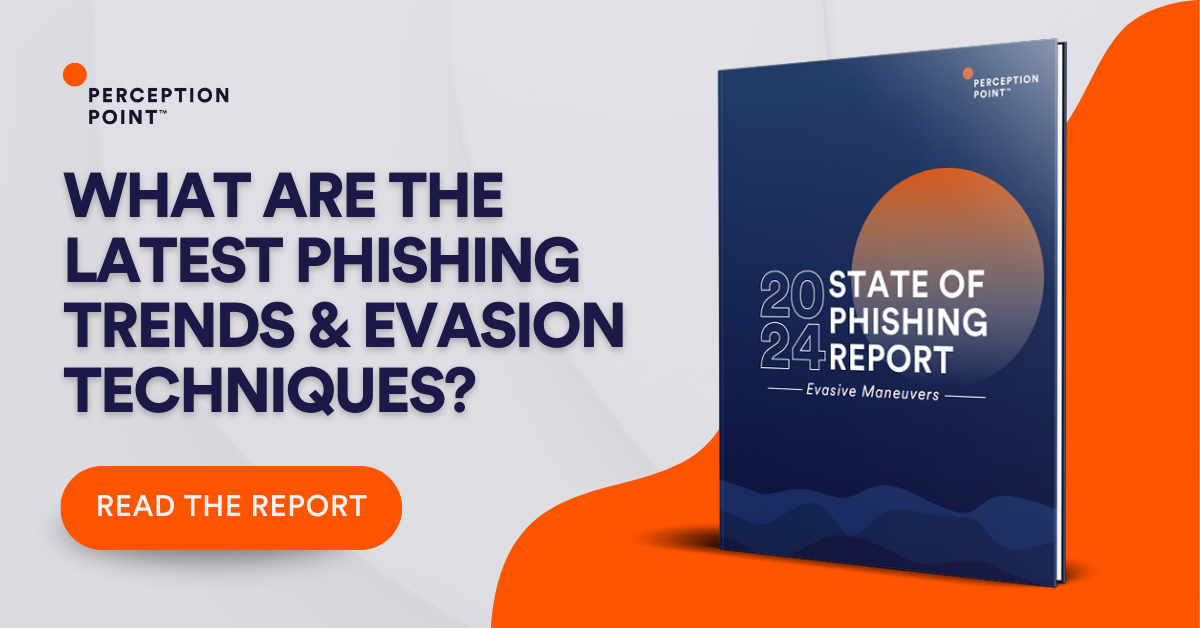In this article, we will take a closer look into the differences between spear phishing and whaling.
This is part of a series of articles about phishing.
What is Spear Phishing?
A spear phishing attack is one of the many ways used to obtain sensitive information or gain access to a computer system. Unlike typical phishing attacks however, spear phishing involves counterfeit messages that appear like they came from a trusted source.
Spear phishing attacks, like other social engineering attacks, exploit our most basic human desire to be helpful. It also capitalizes on our need to provide a positive response to people we know. The harsh truth is, an innocent intention to help someone can make or break your enterprise.
It can be difficult to recognize spear phishing attacks. Here’s how one might happen:
- An attacker knows you use a specific type of software, such as Microsoft 365. So, they send an email that appears to be a notification that you need to update your password.
- The link in the email takes you to a page that looks similar to your 365 login screen, but it is actually a fake URL controlled by the attacker.
- The attacker has just gained access to your 365 account by prompting you to enter your username and current password, allowing them to gather sensitive information or sabotage your company.
This attack would be less effective if sent to someone who does not use Microsoft 365. The specificity is what makes it so sinister. Spear phishing messages mimic the type of emails that employees get on a daily basis, making it appear credible and harder to spot.
Related content: Read our guide to spear phishing.

What is a Whaling Attack?
Whaling is an offshoot of the spear phishing tactic, however, they are frequently mixed up. While spear phishing attacks could target almost anyone within the organization, whaling usually targets the ones at the top. This is because “the whale” or the higher-ups usually have deeper access to sensitive information and confidential resources .
There are far too many real-life examples of whaling attacks. But one recent incident involved a hedge fund co-founder who was targeted via Zoom. The said co-founder followed a fake Zoom link, resulting in the infiltration of his organization’s network. The attackers attempted to steal $8.7 million, but only got away with $800,000. It was a hefty mistake done by accident. But the reputational damage eventually forced the hedge fund to close.
Whether it is work-related or marketing outreach, the internet has become integral to businesses. Unfortunately, since the online space is so ubiquitous it provides cyber attackers ample opportunity to infiltrate organizations. The fake Zoom link example above demonstrates just how easy it is to manipulate online sources these days.

Tal ZamirCTO, Perception Point
Tal Zamir is a 20-year software industry leader with a track record of solving urgent business challenges by reimagining how technology works.
TIPS FROM THE EXPERTS
- Implement advanced threat detection using AI and machine learning. Deploy AI-driven email filtering solutions that can detect and block spear phishing attempts based on behavioral analysis and anomaly detection, not just static rules or signature-based systems.
- Enable DMARC, SPF, and DKIM on all email domains. Domain-based Message Authentication, Reporting, and Conformance (DMARC), Sender Policy Framework (SPF), and DomainKeys Identified Mail (DKIM) are essential to prevent email spoofing. Properly configuring these protocols helps verify the sender’s authenticity and reduce the chance of receiving phishing emails that appear to come from legitimate sources.
- Conduct regular phishing simulations and red team exercises. Beyond standard training, simulate spear phishing and whaling attacks regularly to assess your organization’s readiness and to identify individuals who may need additional training. Red team exercises can further help in identifying potential gaps in your defenses.
- Integrate phishing-resistant MFA solutions. Opt for phishing-resistant multi-factor authentication (MFA) options, such as FIDO2 tokens, which are not susceptible to common phishing tactics like man-in-the-middle attacks or credential harvesting from spoofed sites.
How Whaling Attacks Work
Whaling attacks typically begin with an attacker gathering information about the targeted organization, such as the names of key executives, their email addresses, and their roles at the company. The attacker then creates a convincing email that appears to be from a senior executive within the organization, such as the CEO or CFO.
The email usually contains urgent or confidential information and may ask the recipient to take immediate action, such as wire transfer funds to a specific account, share sensitive data, or purchase gift cards. Attackers may also create a sense of urgency by using phrases like “urgent,” “confidential,” or “time-sensitive.”
To make the email appear legitimate, some attackers use spoofed email addresses that looks nearly identical to the legitimate one, or may compromise an executive’s email account to send the message. Attacks might also conduct extensive research on the company’s operations and financial transactions to make the request seem as realistic as possible.
If the recipient falls for the scam and takes the requested action, the attacker can steal sensitive information, access the company’s systems, or redirect funds to fraudulent accounts. In some cases, whaling attacks can lead to significant financial losses, reputational damage, or regulatory penalties for the targeted organization.
How to Protect Your Company Against Whaling Attacks
To protect against whaling attacks, we recommend taking the following steps to mitigate your organization’s risk:
- Employee Training: Educate employees on how to recognize and avoid phishing attacks, including whaling attacks. This includes being cautious about opening emails or clicking on links from unknown or suspicious sources.
- Multi-Factor Authentication: Implement multi-factor authentication (MFA) for all accounts that access sensitive information. This adds an additional layer of security and makes it more difficult for attackers to gain access.
- Security Awareness: Promote a culture of security awareness within the company, encouraging employees to report suspicious emails or activities immediately.
- Access Controls: Implement access controls and permissions, limiting the amount of sensitive information that any one employee can access.
- Cybersecurity Solutions: Deploy an email security solution, which offers anti-phishing features, that can detect and prevent whaling attacks.
- Regular Testing: Regularly conduct testing and vulnerability assessments to identify potential weaknesses in the company’s security posture and address them before they can be exploited by attackers.
By taking these steps, organizations can significantly reduce their risk of falling victim to a whaling attack and protect their sensitive information, assets, and employees.

Whaling vs Spear Phishing Attacks
As mentioned above, it isn’t uncommon to hear people use whaling and spear phishing attacks interchangeably. Contrary to this popular belief, whaling is actually a type of spear phishing.
Unfortunately, phishing scams don’t just end with whaling and spear phishing. Read more on the other types of phishing in the next section.
Other Types of Phishing Attacks
There are other types of spear phishing attacks that you should be wary of:
Cloning
A cloning attack makes use of previously sent email with attachments or links. The clone is a near-identical copy of the original, except that the attachments or links have been replaced with malware or a virus. The email is usually spoofed to appear to be sent by the original sender and will claim to be a simple resend. When a user falls victim to the forged email, the attacker sends the same forged email to the victim’s contacts from the victim’s inbox.
Vishing
Rather than an email, vishing (voice phishing) involves using a phone call to trick victims into handing over sensitive information. In a vishing attack, victims are targeted with social engineering techniques to trick them into providing credentials or financial information. Tactics frequently involve a deadline or time limit to create a sense of urgency.
Smishing
Smishing, on the other hand, uses text messages to deceive users rather than voice mail. These messages could include a phone number for a targeted user to call, as well as a link to an attacker-controlled website hosting malware or a phishing page.
Related content: Read more in our guide to phishing types.
Preventing Spear Phishing and Whaling with Perception Point
Fortunately, there are many ways to mitigate the risks of these cyber threats like spear phishing and whaling. A critical first step is to secure your organization’s email.
Perception Point’s Advanced Email Security contains multiple scanning engines and threat intelligence for enhanced protection against attacks like these as well as spam, commodity malware and BEC.
For advanced threats, the solution leverages hardware-based and software-based tracking to identify evasive threats. Proprietary software algorithms scan code at the CPU-level to intercept attacks at the earliest stage possible – the exploit – before malware is even delivered.
Perception Point is easy to deploy, analyzes email in seconds, and can scan email traffic at any scale, leveraging the flexibility of the cloud.
Learn more about Perception Point Advanced Email Security
You can also check out this latest report from Gartner® on email security.

A spear phishing attack is one of the many ways used to obtain sensitive information or gain access to a computer system. Spear phishing attacks, like other social engineering attacks, exploit our most basic human desire to be helpful. It also capitalizes on our need to provide a positive response to people we know. The harsh truth is, an innocent intention to help someone can make or break your enterprise.
Whaling is an offshoot of the spear phishing tactic, however, they are frequently mixed up. While spear phishing attacks could target almost anyone within the organization, whaling usually targets the ones at the top. This is because “the whale” or the higher-ups usually have deeper access to sensitive information and confidential resources .
Whaling attacks typically begin with an attacker gathering information about the targeted organization, such as the names of key executives, their email addresses, and their roles at the company. The attacker then creates a convincing email that appears to be from a senior executive within the organization, such as the CEO or CFO.
To protect against whaling attacks, we recommend taking the following steps to mitigate your organization’s risk:
– Employee Training: Educate employees on how to recognize and avoid phishing attacks, including whaling attacks. This includes being cautious about opening emails or clicking on links from unknown or suspicious sources.
– Multi-Factor Authentication: Implement multi-factor authentication (MFA) for all accounts that access sensitive information. This adds an additional layer of security and makes it more difficult for attackers to gain access.
– Security Awareness: Promote a culture of security awareness within the company, encouraging employees to report suspicious emails or activities immediately.
– Access Controls: Implement access controls and permissions, limiting the amount of sensitive information that any one employee can access.
– Cybersecurity Solutions: Deploy an email security solution, which offers anti-phishing features, that can detect and prevent whaling attacks.
– Regular Testing: Regularly conduct testing and vulnerability assessments to identify potential weaknesses in the company’s security posture and address them before they can be exploited by attackers.
There are other types of spear phishing attacks that you should be wary of:
– Cloning
– Vishing
– Smishing























